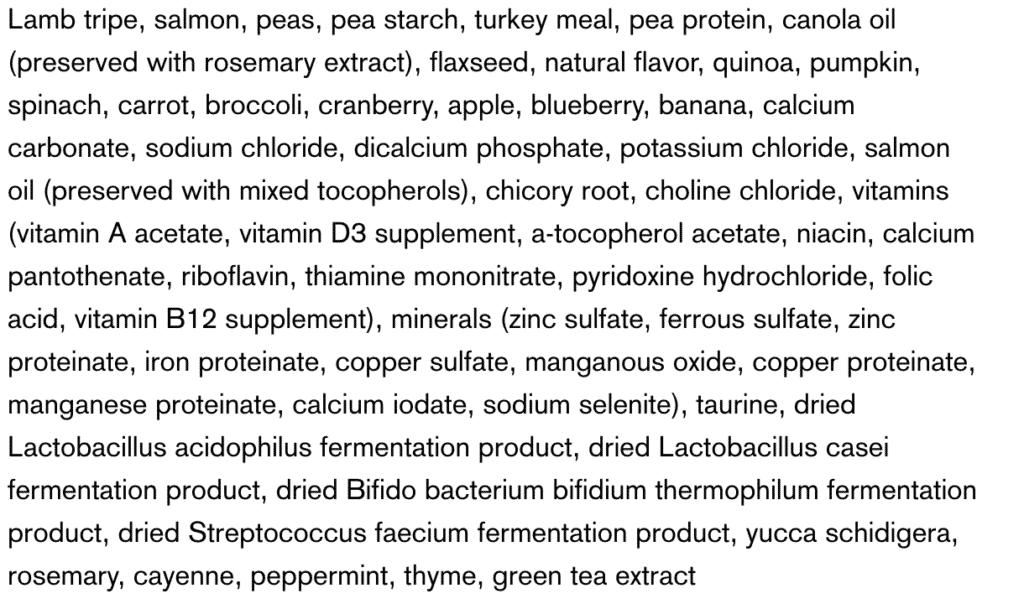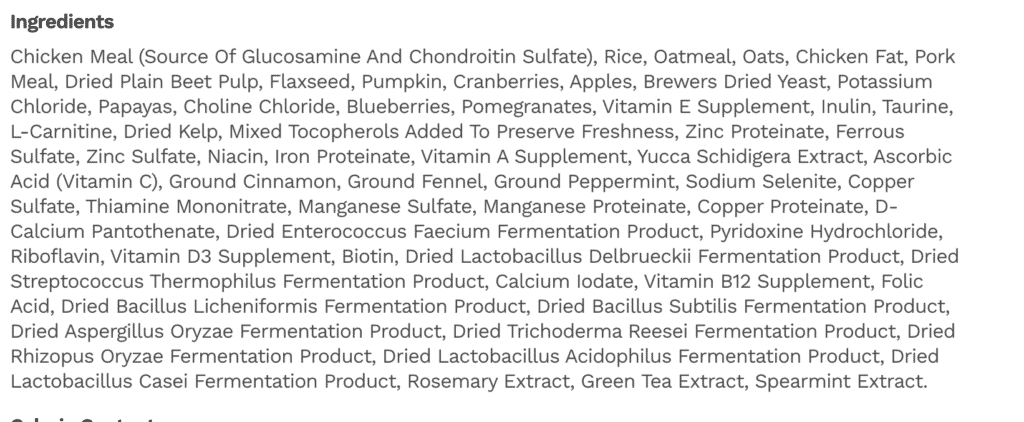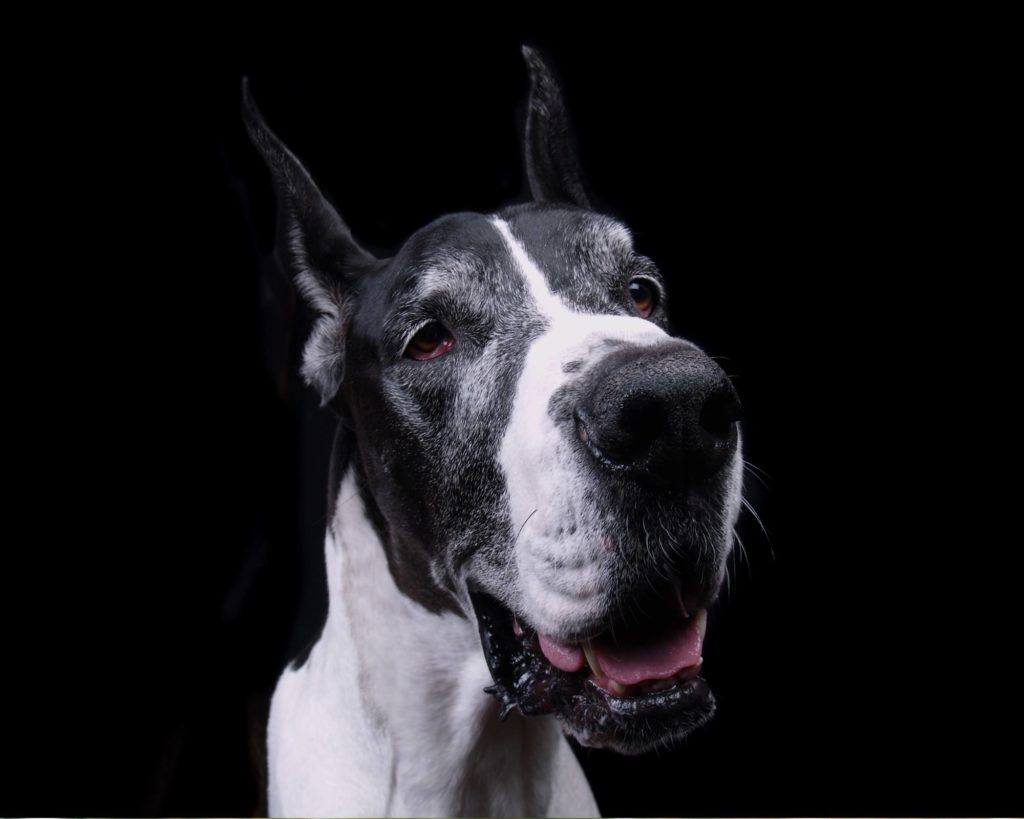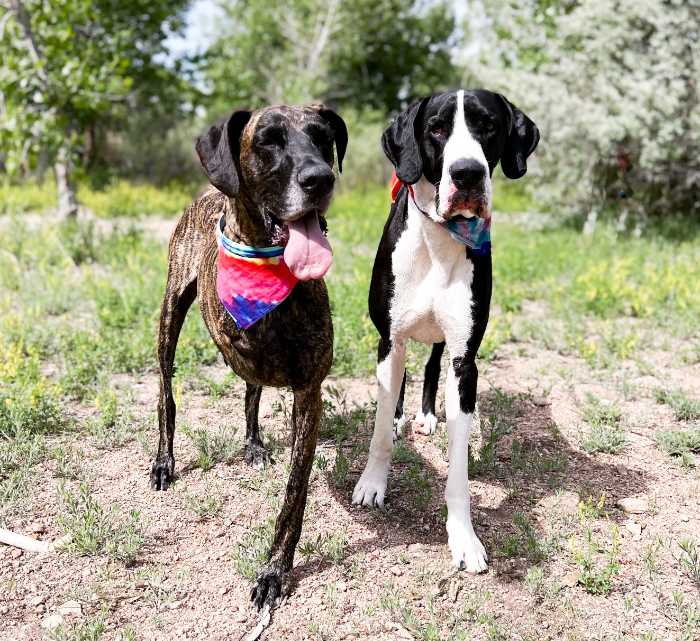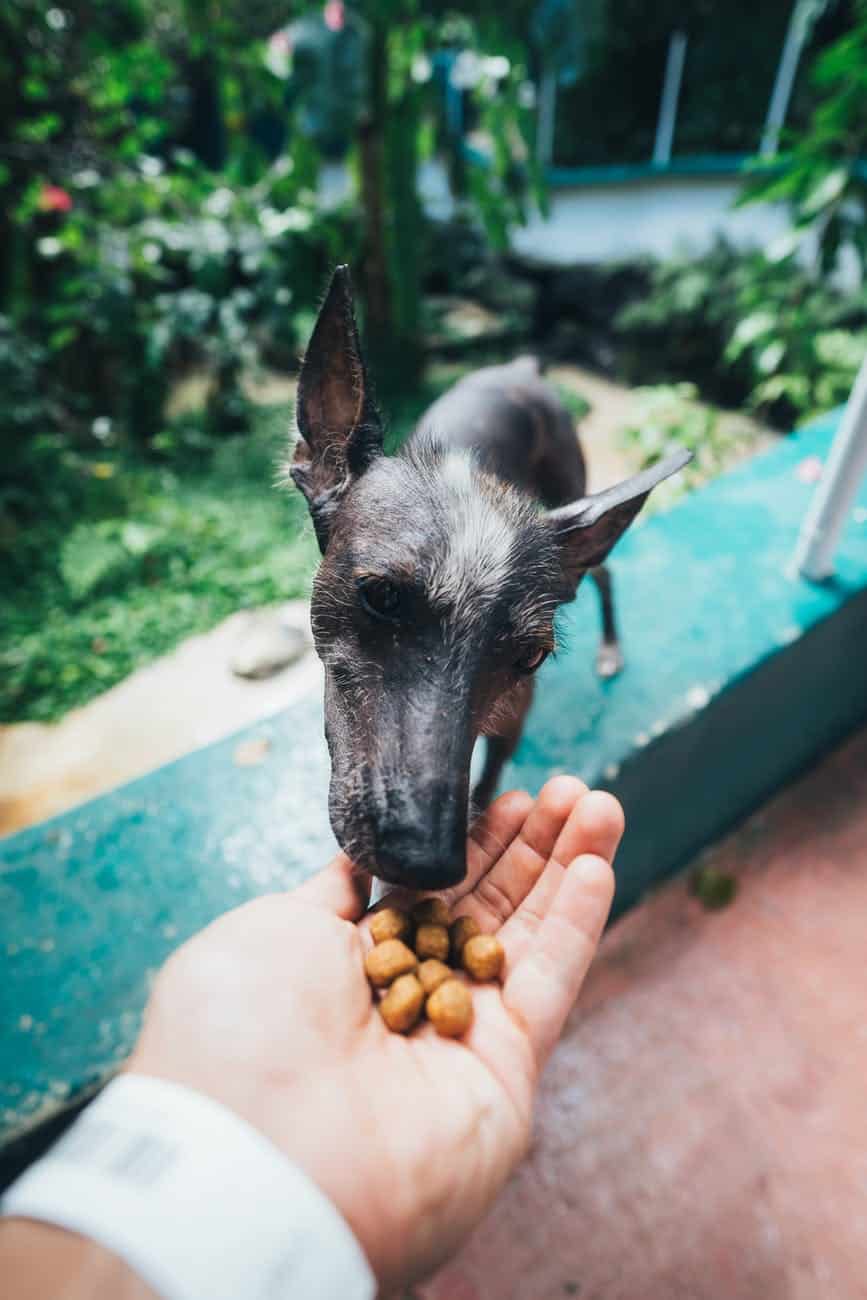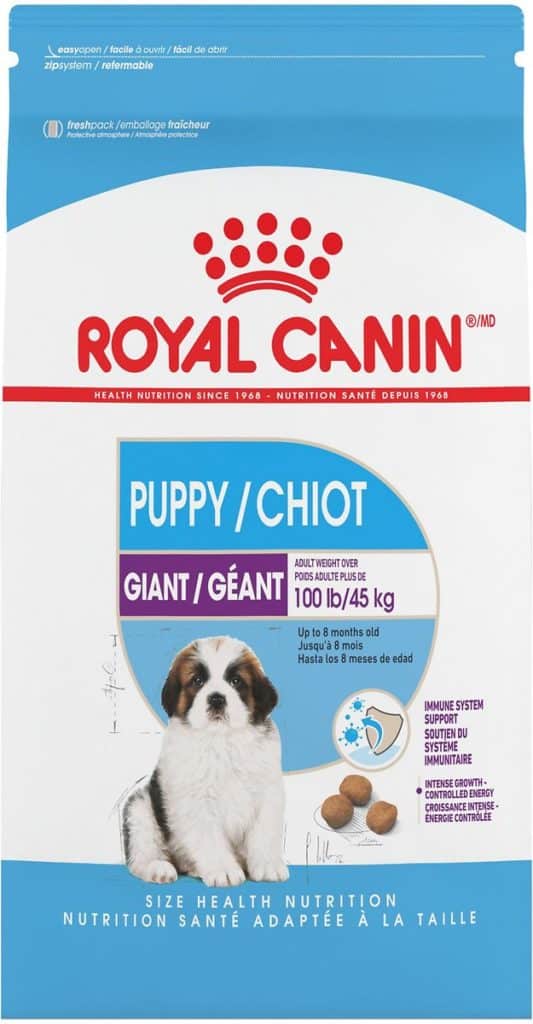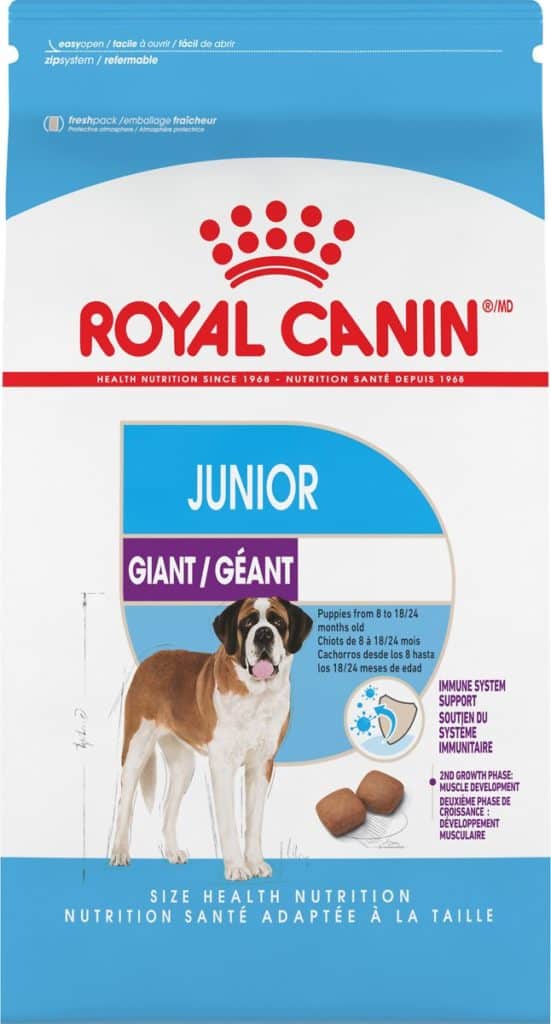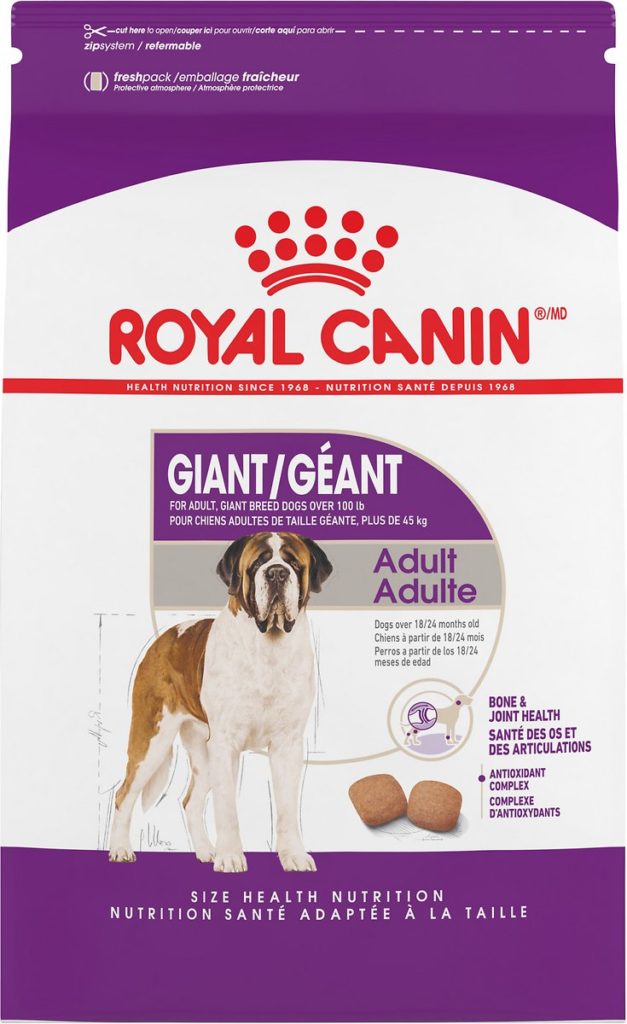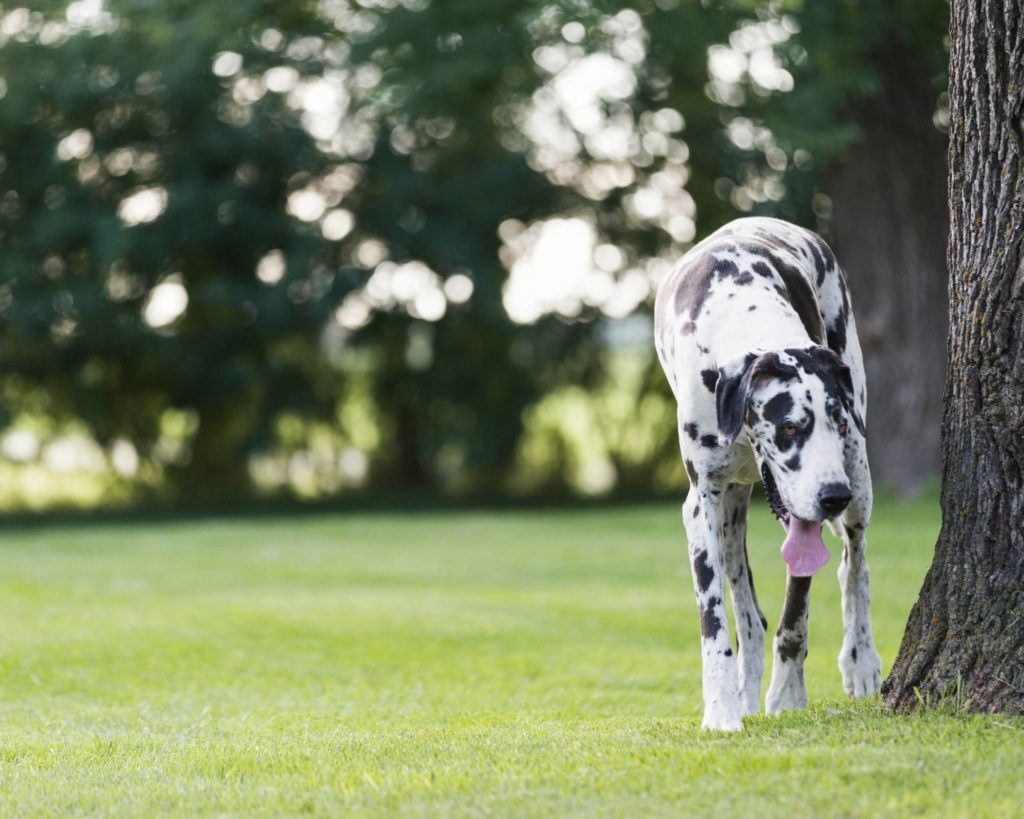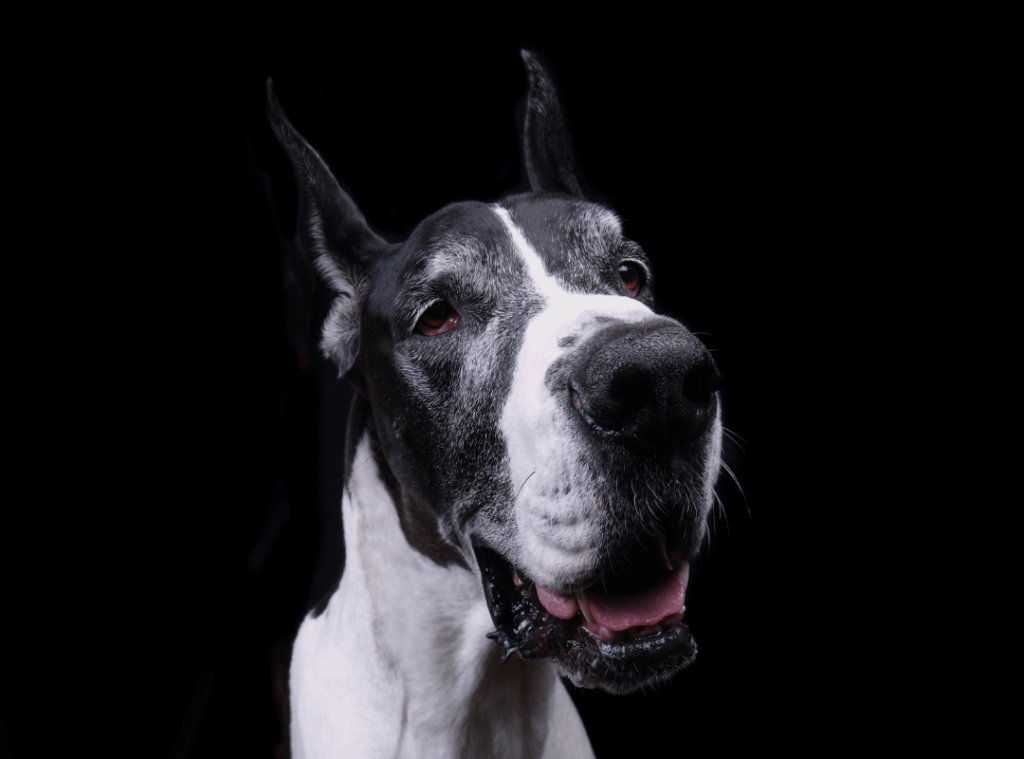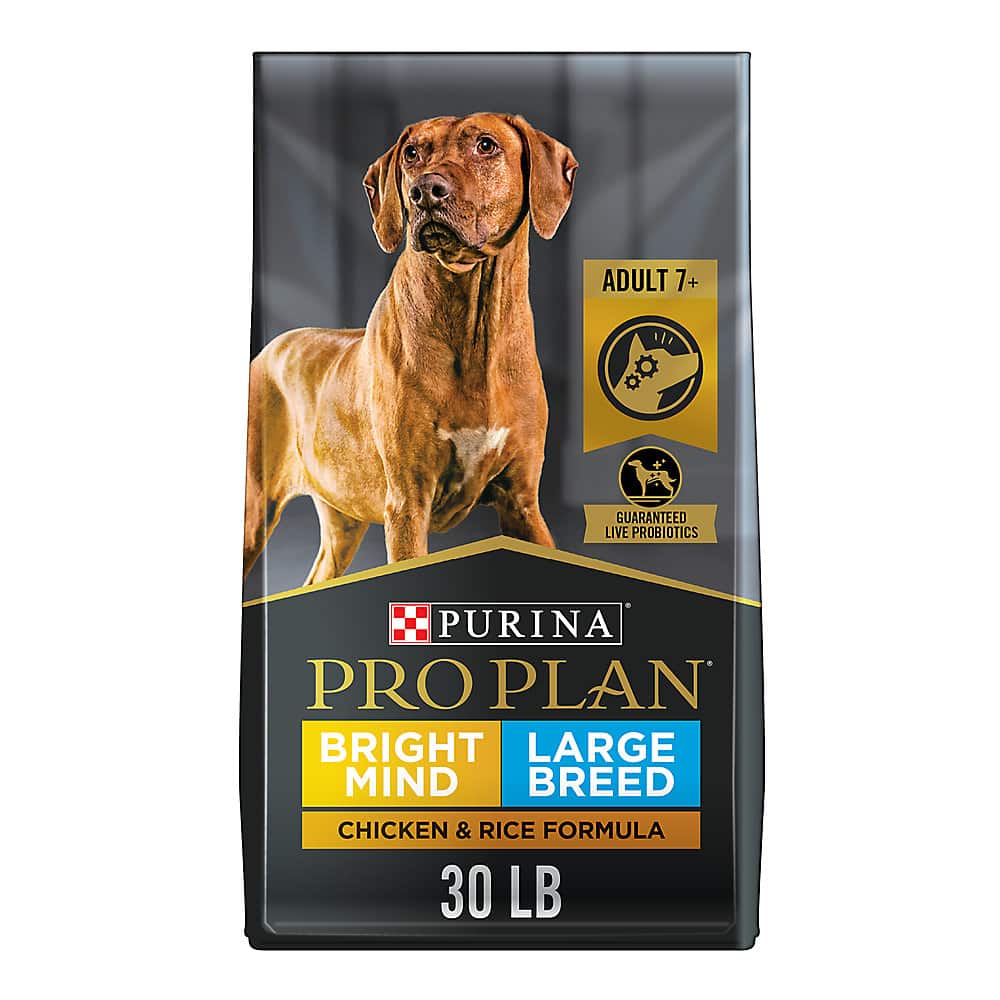Buckle up for an epic rant, sparked by a heated discussion I had in our Great Dane Owners Facebook Group. A self-proclaimed dog “nutritionist” dropped some eyebrow-raising claims, complete with conspiracies and bold, inflammatory statements about pet food, cancer, and poison. It served as a stark reminder of the potential dangers that misinformation in social media pet care can unleash.
We need to talk about this. I’m going to dig into the complexity of how misguided advice online can impact our beloved pets, our own opinions, and the big dog community at large.
I’m a firm believer in “live and let live”, but I do draw the line on predatory misinformation, fake or overstated credentials, pseudoscience, and general quackery. These things are absolutely harming our pets. So in an effort to avoid turning this post into a deranged, epic rant I’m going to organize my thoughts.
Here is what we need to talk about:
- The difference between a “certified nutritionist” and legitimate nutritionist credentials
- How misinformation and disinformation in pet care is leading to health problems, malnutrition, and even abuse
- How to spot quacks, nonsense conspiracies, and predatory social marketing
- Some myth busting Q&A

How Misinformation in Social Media Pet Care Impacts Us
The impact of misinformation in social media pet care reverberates through the entire pet-owning community, affecting each one of us. With the proliferation of often well-intentioned but inaccurate advice circulating on platforms like Facebook, Instagram, and Tik Tok, pet owners often find themselves navigating a maze of conflicting information.
From dietary fads to unverified medical or ‘holistic’ remedies, the consequences of this content can range from ineffective treatments to potentially harmful practices.
Moreover, the spreading of baseless claims and sensationalized stories can create unnecessary panic and anxiety among pet owners, leading to decisions based on fear rather than sound judgment.
Predatory influencers (including many celebrity veterinarians) often exploit pet owners’ anxieties, skillfully using deliberate misinformation as a marketing tool to drive sales of various pet products and services. This tactic is easy to spot once you know what to look for, however!
As a collective responsibility, it becomes imperative for pet owners to critically assess information, seek guidance from reliable sources, and foster a community built on accurate knowledge.

A Tall Tale from a Certified Canine Nutritionist
In a discussion this week about what to feed our Great Danes, a Certified Canine Nutritionist popped in with a list of credentials that they believed gave them authority on the topic.
[Authors note: the comments below were posted in a forum with over 31K members. So while their comments are public, I’ve paraphrased the original writing so they might remain anonymous.]
“With three decades of experience in the dog industry, I bring expertise as a behaviorist and nutritionist. I own a doggie daycare, boarding, and grooming business and have insight into what people feed their dogs. So many people are feeding their dogs pure poison! Veterinarians don’t actually know anything about nutrition. I’ve seen dogs cured of some cancers after I educated them. I have insider knowledge on how the pet industry really works and so many of you people are stupid. My non-disclosure agreement means I can’t share my sources, but they are real. Your dogs will die young and it’s all your fault. Good luck with your sickly dogs!”
Now, I don’t know about you…but this is NOT how most credentialed, highly educated people act. Within just that short paragraph we are seeing many signs of predatory, misleading behavior including:
- Positioning themselves as an authority figure, while blatantly disparaging those (veterinarians) with more advanced credentials
- Inflammatory, anxiety inducing claims utilizing key words such as “poison”
- Pseudoscience (is supposedly able to cure cancer)
- Has “insider knowledge” from sources they cannot name
- Is intentionally fostering fear, guilt, and anxiety
Pet Nutritionist Credentials
Curious about their background, I delved into their credentials. This individual asserted they had studied zoology, positioning this qualification as a mark of expertise. The irony is hard to miss, though, as in the very same breath, they declared, “Veterinarians don’t know anything about nutrition.“
Hold on a moment. So, a practicing veterinarian who sees 100’s of pets each week, carries a B.S. in Animal Science and a Doctorate in Veterinary Medicine, and that has extensive training and education in animal health, supposedly knows nothing about pet nutrition?
Meanwhile, a dog groomer with an unused zoology degree is considered an authority on the subject. The irony here is certainly hard to ignore. I’m immediately suspicious, and you should be, too!

Pet Nutritionist vs. Veterinary Nutritionist
It’s essential for pet owners to discern between a pet nutritionist and a veterinary nutritionist when digesting information about pet care and nutrition.
Here are some very common Pet Nutritionist titles:
- Certified Pet Nutritionist
- Certified Canine Nutritionist
- Pet Nutrition Expert
- Dog Nutrition Expert
- Animal Nutritionist
- Holistic Pet Nutritionist
- Holistic Pet Nutrition Consultant
- Natural Dog Nutrition Specialist
- Veterinary Nutritionist
Only ONE Of the titles on the above list is a truly educated and credentialed authority on the topic of pet nutrition. Can you guess which one?
A pet nutritionist (any person with a title who is NOT a Board Certified Veterinary Nutritionist) often obtains certifications through various online courses.
These online courses typically require no prerequisites (anybody can take them, regardless of their past education), usually take less than 10 hours to complete, and can be as affordable as just $10.
To put this simply, anybody can become a “Certified Nutritionist” for pets, and market themselves as an expert.
On the other hand, a veterinary nutritionist is a licensed veterinarian who has pursued advanced education and specialization in companion animal nutrition, providing a more comprehensive approach to a pet’s dietary needs.
Interestingly enough, the “pet nutritionists” advice is often at odds with the information shared by boarded Veterinary Nutritionists.
BK Pets, a popular influencer on Tik Tok, stands out as a prime example of a popular “Pet Nutritionist” with a large following, exaggerated credentials, and an abundance of affiliate links and big money brand deals. His content often includes misleading information that denounces veterinarians, not to mention pet care nutritional advice that diverges from scientific and mainstream opinion.
How to Become a Boarded Veterinary Nutritionist
To obtain a board certification in veterinary nutrition, veterinarians embark on a rigorous years-long journey. This certification is granted by organizations such as the American College of Veterinary Nutrition (ACVN) or the European College of Veterinary and Comparative Nutrition (ECVCN).
Veterinarians aspiring to become board-certified in veterinary nutrition undergo extensive postgraduate training, which includes completing a residency program focused on nutrition, conducting original research, and authoring scientific publications. After fulfilling these stringent requirements, candidates must successfully pass a comprehensive 2-day long examination to demonstrate their proficiency.
The distinction between the two underscores the importance of ensuring that the nutritional guidance sought for pets is backed by a solid foundation in both nutrition and veterinary medicine.
Because the truth is, anybody can claim to be an ‘expert’ and spread dangerous misinformation with no checks and balances. But only a few truly are experts.

How Disinformation on Social Media Leads to Abuse
Disinformation on social media platforms from unregulated, unchecked ‘experts’ has unfortunately created a viral breeding ground for misinformation, conflicting opinions, and conspiracies.
False narratives, misguided advice, and sensationalized stories about cancer, toxins, and veterinarians circulating on social media are damaging.
Well-intentioned but misinformed individuals may adopt harmful care practices, misguided diets, or questionable training methods, believing they are acting in the best interest of their pets.
In some pet care groups, boasting thousands of engaged members, the go-to advice is often to choose an herb, essential oil, or “holistic” supplement or diet rather than seeking proper veterinary care. It’s heartbreaking, especially when animals are dealing with painful or damaging conditions that could be easily treated or even prevented.
This approach, neglecting essential medical attention in favor of alternative remedies, is a concerning form of pet abuse that doesn’t get the attention it deserves. There is an epidemic of ‘experts’ online ready and willing to solve all of your anxieties and fears with a ‘remedy’.
Remember the snake oil salesmen in the 1800’s? Let’s not forget history.
The Woo-to-Q and Crunchy Cult Pipelines
The “Woo to Q” and “Crunchy Cult” phenomenon is driven by social media. They represent a trend where pet owners increasingly lean towards unconventional and alternative approaches to pet care. “Woo” denotes practices that may lack scientific backing, often bordering on pseudoscience. The same mentality is what drives people towards Q, the conservative conspiracy group.
The Crunchy Cult refers to a community that embraces an ultra-natural and holistic lifestyle for their pets, including raw diets, herbal remedies, and eschewing conventional veterinary practices.
While some of these approaches may have merit, the phenomenon underscores a growing skepticism towards traditional pet care norms, veterinary medicine, and peer reviewed science.
It prompts reflection on the balance between exploring alternative options and ensuring that our pets receive evidence-based, reliable care to maintain their health and well-being.
As with all things in pet care, there is a direct parallel to the same trends in human health, wellness, and raising children.

How Pseudoscience & Misinformation is Profitable for Pet Influencers
This segment is not only thought-provoking but might also spark some controversy. What I’m about to share could push you out of your comfort zone, and that’s completely fine! Experiencing cognitive dissonance is a natural part of the process.
The intentional, deliberate, and predatory promotion of pseudoscience and misinformation has become an extremely lucrative career for many pet influencers on social media.
Notably, figures like Dr. Karen Becker, Dr. Judy Morgan, Dr. Marty, and BK Pets have large followings. These influencers frequently deviate from widely accepted advice. They openly deprecate practicing veterinarians and established research while endorsing ‘holistic’ pet care suggestions.
Leveraging their online platforms, these celebrity veterinarians and the “pet nutritionists” who follow them often peddle unverified health advice, cherry-picked studies, controversial statements, and questionable pet care practices to a receptive audience.
By sharing information that at times may even be inflammatory (for example, “kibble causes cancer”), they easily generate clicks, likes, follows, and sales.
While their charismatic presentation and seemingly authoritative demeanor may attract followers who are ready and willing to spend money on their beloved pets, it’s crucial to scrutinize the factual foundation of their information.
The profitability of pseudoscience in the pet influencer realm raises concerns about the potential impact on pet owners who might unknowingly adopt practices that lack scientific backing.
Pet Nutrition Influencers & How Anxiety Sells
What adds to the complexity of this situation is that these influencers do, on occasion, provide valuable and helpful content. However, the concern arises when they intentionally diverge from mainstream opinions, using their influence to instill fear and anxiety among their followers.
The truth is, fear and anxiety are marketable. It’s relatively simple to persuade someone to buy into an online course, invest in an expensive supplement, or adopt a homemade pet food recipe if they’re motivated by the fear of potential consequences. The exploitation of fear for profit raises ethical questions about the intersection of pet care and commerce in the influencer sphere.

How to Spot Quacks, Nonsense Conspiracies, and Predatory Social Marketing
Let’s start with a friendly tip: check out the credentials and expertise of the folks sharing advice.**
Qualified professionals will have legitimate qualifications, often holding degrees or certifications from reputable institutions. Of course, there are many quacks with degrees (Dr. Mercola comes to mind) but this is a good place to start, especially if you are comparing a credentialed professional (DACVN) to a ‘pet nutritionist’ with an online certificate.
Now, about those conspiracies floating around social media – they can be tricky.
Look out for stories that are overly dramatic or try to scare you. Conspiracies often play on our emotions, especially fear and outrage. To spot these, be vigilant about overly dramatic or fear-inducing narratives designed to exploit emotions, capitalizing on fear and outrage.
Made Up Stories
While working on this blog, I took a break to check on our Facebook group (we are in the middle of the unprecedented Victor Pet Food recall and the group is buzzing). I saw that somebody had asserted that a specific brand of food (not Victor) had caused harm to their pet.
Seeking more details, I received only a vague response about “spiders and bugs.” We all know pets eat bugs off the ground, so it seemed like a BIG stretch. I inquired further, and the narrative suddenly shifted to the presence of ‘chemicals’ in the food being the issue.
In essence, it became apparent that this was a fabricated story crafted to evoke fear, anxiety, and promote conspiracies. It’s likely that their pet succumbed to a different cause. The owner then seized the opportunity to spread misinformation about a particular brand, which became their priority. This is a great example of social media driven misinformation!
Keep an eye out for transparency and accountability. The good sources back up what they say with evidence and point to reliable studies. They’re upfront about any possible conflicts of interest, too. If someone’s making big claims and seems motivated to sell something as an alternative, that’s a sign to be cautious.
**As the author of this blog, I recognize the clear issue of expertise and being a ‘self proclaimed expert’ in big dogs. It’s important to note that when we provide information on this blog, every effort is made to ensure that recommendations are backed by science and the popular opinion of credentialed professionals. We always cite our sources and adhere to established guidelines. You may find our content & liability disclosure of interest.
Social Media Misinformation Red Flags
Recognizing red flags indicative of misinformation, snake oil, and general quackery are the key to ensuring that the information you digest about your pet’s health is rooted in actual evidence. Here are our top pet care social media misinformation red flags:
- Unverified Credentials: Exercise caution when taking advice from individuals without recognizable and legitimate qualifications or certifications. This is especially if they claim to know more than somebody who is a practicing, board certified veterinarian. Genuine experts usually maintain transparent and credible credentials, or they openly acknowledge that their information is sourced from credentialed professionals.
- Sensationalized Claims: Watch out for overly dramatic or fear-inducing narratives. Misinformation often relies on emotions, playing on fear or urgency to capture attention.
- Lack of Evidence-Based Information: Reliable sources provide evidence-based information and cite reputable studies. Red flags include vague references, unsupported claims, or the absence of credible sources. They may say “I know things but cannot disclose how I know them, for example.
- Conflict of Interest: Transparent and trustworthy influencers disclose any potential conflicts of interest. If someone appears more focused on promoting products for profit than providing accurate information, it’s a red flag.
- Grand Promises: Be wary of pet care advice that makes grand promises or guarantees. Genuine experts emphasize the complexity of animal health and well-being rather than offering magical fixes.
- Emotionally Charged Language: Misleading influencers often use emotionally charged language to sway opinions. If the content relies heavily on emotions rather than factual information, approach with caution.
- Urgency and Impulsivity: Influencers employing manipulative tactics, such as creating a sense of urgency to encourage impulsive purchases, may prioritize profit over the well-being of pets.
- Exclusivity or Fear of Missing Out (FOMO): By criticizing those outside their circle, they cultivate a core sense of elitism. This fosters loyalty to the ideas they promote. These influencers share “secrets” and “inside information” that you can only get from them.
- Discrediting Established Professionals: Red flags may arise when influencers openly criticize or deprecate practicing veterinarians, researchers, or institutions. This is often done without credible reasons or evidence.
- Misleading Transparency: If details about an influencer are unclear or undisclosed, approach with caution. Unfortunately, many influencers are VERY good at selling, and sell themselves as ‘authorities’ when they are anything but.

How Some Pet Care Social Influencers Parallel Cults
Influencers within the natural pet care movement (in particular) often display characteristics reminiscent of cult-like behavior. Yeah, I said it.
There’s a clear delineation between those deemed “in the know” and those on the outside, creating an elitist atmosphere. Loyalty to specific beliefs, brands, and practices are rewarded, fostering a sense of allegiance that can be challenging to question. The movement often places a heavy emphasis on individual experiences and anecdotes over peer reviewed research and evidence (this is a KEY difference), discouraging dissent and promoting a unified front.
Charismatic Leadership
Influential figures become the sole arbiters of truth. They are easily followed by people who want to also be “in the know” because they are engaging and appear trustworthy. The devout followers then share the content and cite it as truth. This is done even when it completely defies the popular opinion, actual science or even common sense.
Questioning of Established Knowledge & Practices
By pitting pet owners against their veterinarians, the charismatic leaders establish authority and strengthen their followers isolation from the community. Claims that large pet food brands, veterinary nutritionists, vaccines, and preventatives are all corrupt, toxic and damaging are made. This is a deliberate attempt to drive a wedge between the pet parent and their pets’ health care professional.
This dynamic is frequently observed in marketing strategies as well. Pet food brands frequently strive to distinguish themselves in the market. By making extravagant claims about the supposed ‘harmful’, ‘gross’, or ‘toxic’ ingredients or formulas of competing brands, they can upsell themselves. This occurs even when the brands they criticize have a well-established history supported by nutritional science and research.
Generating Unreasonable Fears
By driving anxiety and exaggerated claims about pet foods, brands, and veterinary care, followers develop unreasonable fears that are hard to overcome. For instance, if a prominent influencer declares that “kibble causes cancer,” this can trigger heightened anxiety among followers who are deprived of accurate statistics and scientific information on the subject.
Many pet parents have developed misguided concerns regarding pet food ingredients, recalls, and the presence of “chemicals.” While it’s beneficial to consistently inquire and seek information, when fear takes precedence over our capacity to think critically about our pet’s health (and hear what the real experts say about it), fear emerges as the victor.
Making Followers Feel Inadequate
There’s a strong push to “do better” for our pets, often accompanied by the insistence that pet parents must invest more money, time, and resources to meet a certain standard. For those without the financial means to justify splurging on expensive kibbles and ‘fresh’ foods, this narrative can be particularly distressing.
Followers might find themselves in debt or grappling with intense guilt as they strive to address this issue and meet the influencer’s expectations of “building a better bowl.”
They are Always Right, Everybody Else is Wrong
Even when challenged with evidence and peer reviewed science, the charismatic leader is unwavering and unwilling to explore a change in mindset.
Currently, we are witnessing a clear example of this phenomenon with the increase in Nutritional DCM rates coinciding with the popularity of “natural” and “holistic” pet foods. Researchers have identified that a formulation problem is contributing to this preventable condition. However, many influential figures are hesitant to acknowledge it as an ongoing concern. They frequently claim that it has been “debunked” or that the “FDA found no evidence,” viewing these statements as conclusive and resisting further inquiry.
Meanwhile, pets continue to be harmed by certain food formulations.
They Have Insider Information
This individual claims to possess exclusive ‘insider information’ and is positioned as the sole authority with direct access to the “truth,” which they impart to their followers. In their perspective, no other information is deemed credible. A notable illustration of this behavior could be an influencer asserting that “Veterinarians receive kickbacks.”
Even if 20 other veterinarians debunk this notion, the influencer insists they are correct, citing their personal experience working with one veterinarian as the source of their supposed truth. The belief in their authority on the subject overrides any conflicting evidence from multiple legitimate sources.
As this movement gains traction, it is essential for pet owners to approach holistic pet care with a discerning mindset, valuing evidence-based practices and seeking a balance between alternative approaches and conventional veterinary care.

Pet Care Myth Busting
I’ve said a lot, but thought it might be important to throw in one last pet care Q&A.
The allure of captivating and sensational pet care content draws many people into false narratives. Thankfully, if you’ve made it this far into my article today you’re well on your way to being an educated and science-minded pet owner who uses critical thinking.
5 Myths in Pets
There are frequently propagated by social influencers and celebrity veterinarians in pursuit of likes, clicks, and affiliate profits.
- Raw Diets Cure Everything: A prevalent myth in the ‘holistic’ dog community is the belief that feeding a raw diet can miraculously cure various health issues. While a balanced diet is crucial for a dog’s well-being, claiming that raw diets are a panacea oversimplifies the complexity of health conditions and the importance of veterinary care.
- Vaccinations Are Harmful: Some individuals propagate the myth that vaccinations are inherently harmful and should be avoided. In reality, vaccinations play a crucial role in preventing serious and potentially life-threatening diseases, and their benefits far outweigh the minimal risks.
- Chemical-Free Is Always Better: There’s a common misconception that avoiding all chemicals is the key to optimal pet health. However, this myth oversimplifies the complexity of chemistry and ignores the fact that not all chemicals are harmful. Essential medications, flea preventatives, and other scientifically formulated treatments can be vital for a pet’s health. Let us not forget that essential oils are in fact chemicals, too.
- All Commercial Dog Food Is Unhealthy: Most “pet nutritionists” argue that all commercial dog food is unhealthy and can cause cancer. They often advocate for boutique kibbles or homemade diets, (often depending on which pet food company pays them the most). While there are high-quality commercial dog foods, perpetuating the belief that they are universally harmful oversimplifies the diverse and well researched options available and may lead to unbalanced diets. Additionally, this elitist, classist position uses fear to promote the false and dangerous idea that pet parents must spend a lot of money and time on “higher quality” foods and supplements.
- Natural Remedies Always Trump Medications: Another prevalent myth is the belief that natural remedies are always superior to conventional medications. While some natural remedies can complement traditional treatments, they may not always be sufficient or appropriate for certain medical conditions. Relying solely on natural remedies without professional guidance can compromise a pet’s health.
Don’t Be a Victim
The landscape of pet care on social media is marked by both valuable insights and nonsense misinformation. While influencers and online communities can offer helpful advice, it is crucial for pet owners to approach information with a discerning eye.
The allure of sensationalized content, unfounded claims, and the promotion of exclusive ideologies can lead to the propagation of myths that may adversely impact our pets’ well-being. As responsible pet caregivers, we must prioritize evidence-based information, consult qualified professionals, and foster a community that values transparent, science-backed practices.
By navigating the digital realm cautiously, we can ensure that our pets receive the care they deserve, steering clear of the pitfalls of social media misinformation.
Interested in joining a friendly, inclusive community that has no tolerance for misinformation? You might like our Great Dane (and other big dog) Owners Group!









